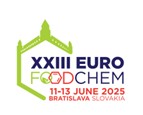Vedecký časopis - archív
Journal of Food and Nutrition Research
Súhrny čísla 1 / 2009
BONGARD, S. – MEYNIER, A. – RIAUBLANC, A. – GENOT, C.
Protein-stabilized oil-in-water emulsions and low-fat dairy stirred gels
Journal of Food and Nutrition Research, 48, 2009, č. 1, s. 42-50
Sébastien Bongard, INRA, UR1268 Biopolymères Interactions Assemblages, BP 71627, F – 44316 Nantes cedex 3, France. E-mail: anne.meynier@nantes.inra.fr, tel.: 33 240675245, fax: 33 240675084
Súhrn: The evolution of the oil-water interface was investigated throughout the preparation of stirred acid gels, which were models of stirred yoghurts. Stock emulsions were prepared (200 g.kg-1) and diluted to the final values of 15 g.kg-1 or 5 g.kg-1 by a solution of milk proteins. Gels were obtained by addition of glucono-δ-lactone and stirred. Evolution of the protein load and composition of the interface was investigated at 10, 25 and 43 °C. The protein load at the oil-water interface (mg•m-2) was similar regardless of the nature and level of fat, and the liquid versus gel state of the continuous phase. It was reduced upon storage at 10 °C, but tended to increase at higher temperatures. The caseins / whey proteins ratio (Cas/WP) was higher at the interface of fresh emulsions (fat content, 200 g•kg-1) than in skimmed milk. It decreased in low-fat matrices stored at 10 °C, becoming generally not significantly different from that of skimmed milk. At the interface of stirred gels, it also decreased significantly with the temperature of storage. Re-organization of interfacial casein micelles and secondary adsorption of WP were involved. The protein load and composition at the interface of the final products could not be simply extrapolated from that of the original concentrated emulsions.
Kľúčové slová: whey proteins; caseins; milk fat; emulsion; acid gel; oil-water interface
Na stiahnutie:
jfnr-2009-1-p042-050-bongard.pdf (PDF, 257.43 Kb, 3447x)










